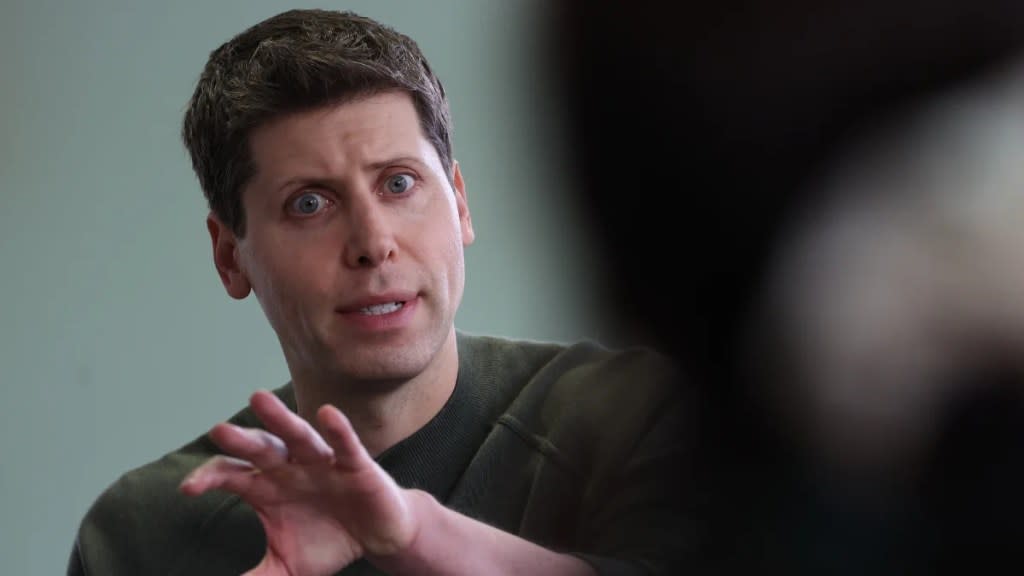Sam Altman Returns To OpenAI: How The Chaos Changes The AI Field

- Oops!Something went wrong.Please try again later.
Sam Altman is back. Improbably and dramatically, the ex-OpenAI CEO returned as CEO late Tuesday. Altman’s counter-coup swept out three board members who sparked his firing and included an agreement to investigate what went down this past weekend. The new board — which now includes Larry Summers and Bret Taylor — will expand to up to nine members, likely including someone from Microsoft.
The AI field will not go back to ‘normal’ after this. OpenAI was already vulnerable coming into the chaos and will now have to work harder to maintain its lead while facing inspired competition. Though the narrative might frame this as a major win for OpenAI and Microsoft, the reality, as always, is a bit more nuanced. Here’s how the AI field changes after this:
Sigh Of Relief For Microsoft
Some 18,000 Microsoft customers use its OpenAI service on Azure, and the disintegration of OpenAI would’ve left them scrambling. Microsoft had to return its OpenAI partnership to some order, and it could not have hired OpenAI’s entire staff and kept the OpenAI service running. So this is a positive resolution and a relief after a tense few days. There are still some governance issues to resolve. Microsoft doesn’t have an OpenAI board seat after all this. But this was the least bad option for Satya Nadella & co., who can now press forward with their industry-leading AI efforts, even if having Altman in-house would’ve paid dividends over time.
Golden Opportunity For OpenAI Competitors
Companies building on OpenAI technology freaked out this past week. They trusted in a company that almost evaporated in a weekend. So today, those building on OpenAI are putting contingency plans in place should the situation repeat. The era of model agnosticism is really here. Soon, any serious AI company will be able to substitute OpenAI for Anthropic or any other competitor. Startup founders using OpenAI have already told me they’ve started work on it this week. OpenAI competitors are already trying to exploit the situation. “Utterly insane weekend. So sad. Wishing everyone involved the very best,” Inflection CEO Mustafa Suleyman wrote this week. In the next breath, he said: “Come run with us!”
AI Talent Wars Heat Up Big Time
OpenAI sold the world’s top AI researchers on a vision and a safety valve: Join us, help us get closer to human-level artificial intelligence, and if things get unsafe, the board will step in. It was a win-win proposition that was ultimately a sham. The OpenAI board was poorly structured, almost blew up the company, and the new structure will be less safety-focused. This will open avenues for competitors to recruit researchers who otherwise might’ve gone to OpenAI. Meta chief AI scientist Yann LeCun is already endorsing the case that his team’s open-source focus will make it an unlikely winner. He might be right.
OpenAI’s Lobbying Efforts Hampered
Altman’s pushed an AI ‘safety’ agenda in Washington and globally, becoming a lobbying force. OpenAI’s corporate structure lent legitimacy to his efforts. The implicit message: We’re the AI safety company, not the for-profit, please listen to us and consider the following rules. With the non-profit board’s decision so quickly reversed after pressure from investors (and well-compensated employees), the myth will take a hit. OpenAI will now become one of the pack, without its special sheen, which will change its ability to influence policy.
AI Safety’s Muddy Future
OpenAI’s board was supposed to save us from an AI apocalypse. Then, it couldn’t think three steps ahead in a boardroom coup. Much of the blame rests with the specific individuals. But more broadly, it’s hard to imagine anyone will have confidence in our ability to stop harmful AI should we develop it. (And what if the board’s concerns in this area were legitimate?) The future of the AI safety field is in flux.
Chaos Is A Ladder
OpenAI’s chaos may be its own ladder. It moves forward with a board more sympathetic toward accelerating AI development. It will work more closely with Microsoft under the new structure, with fewer speedbumps along the way. And it may have some incredible products en route. But the chaos will also be a ladder to those OpenAI once had on their heels. And some competitor — whether it’s Anthropic, Inflection, Google, or others — will inevitably exploit the moment and rise.
The post Sam Altman Returns To OpenAI: How The Chaos Changes The AI Field appeared first on TheWrap.

